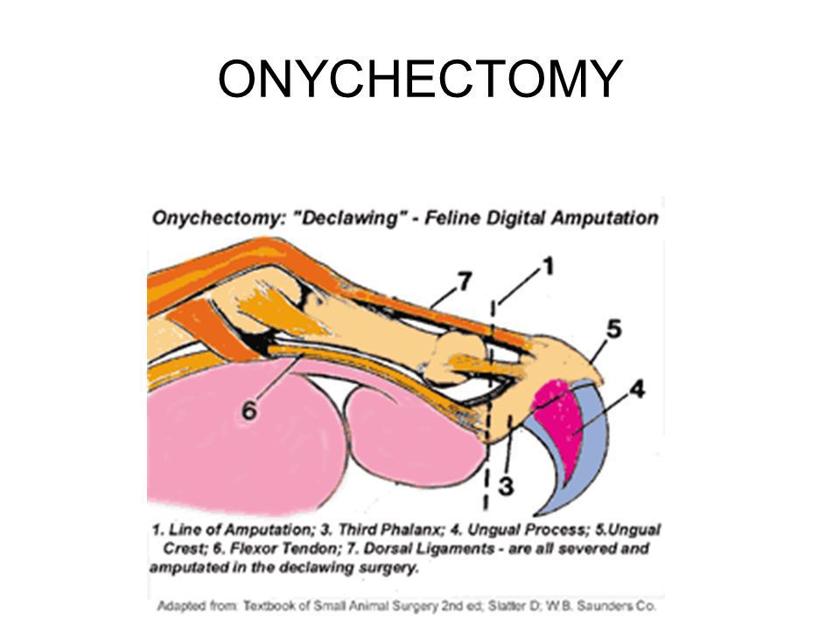BLOG
Cat DeclawingIt is Medically Harmful
Declawing can cause paw pain, back pain, infection, tissue necrosis (tissue death) and lameness. Removing claws changes the way a cat’s feet meet the ground and can cause pain like wearing an uncomfortable pair of shoes. Improperly removed claws can regrow, causing nerve damage and bone spurs.
Some felines will suffer immediate complications from the procedure, but for others the damaging effects of declawing may not become obvious until many months or years later.
What Is Declawing?
Declawing is a surgical procedure, also called “de-knuckling” or onychectomy, in which the animal’s toes are amputated at the last joint. Most people do not realize that a portion of the bone, not only the nail, is removed.
In humans, declawing is similiar to cutting off each finger at the last joint.
Many veterinarians in the USA refuse to perform declaw surgery, because amputating a cat’s toes is an unethical, mutilating procedure.
Permanent lameness, arthritis and other long-term complications are associated with declawing.
Declawed Cats Are Less Likely To Use The Litter Box
People often mistakenly believe that declawing their cats is a harmless “quick fix” for unwanted scratching. They don’t realize that declawing can make a cat less likely to use the litter box or more likely to bite.
Declawed Cats Can Begin Spraying
Scratching is a natural behavior of cats. It is how they sharpen their claws, stretch, and mark their territory. Without their claws to mark territory, they may resort to spraying as a way to mark what belongs to them.
Scratching damage to household furnishings can be minimized or avoided by routine clipping of the cat’s claws, using claw covers, or redirecting the cat’s activity to acceptable surfaces. Scratching posts come in all shapes, sizes, and colors. Try a few different kinds to find out what your cat prefers.
Declawing Consists of Bone Amputations
The last bone of each of the ten front toes of a cat’s paw is amputated. Also, the tendons, nerves, and ligaments that enable normal function and movement of the paw are severed.
In humans, declawing is similiar to cutting off each finger at the last joint.
